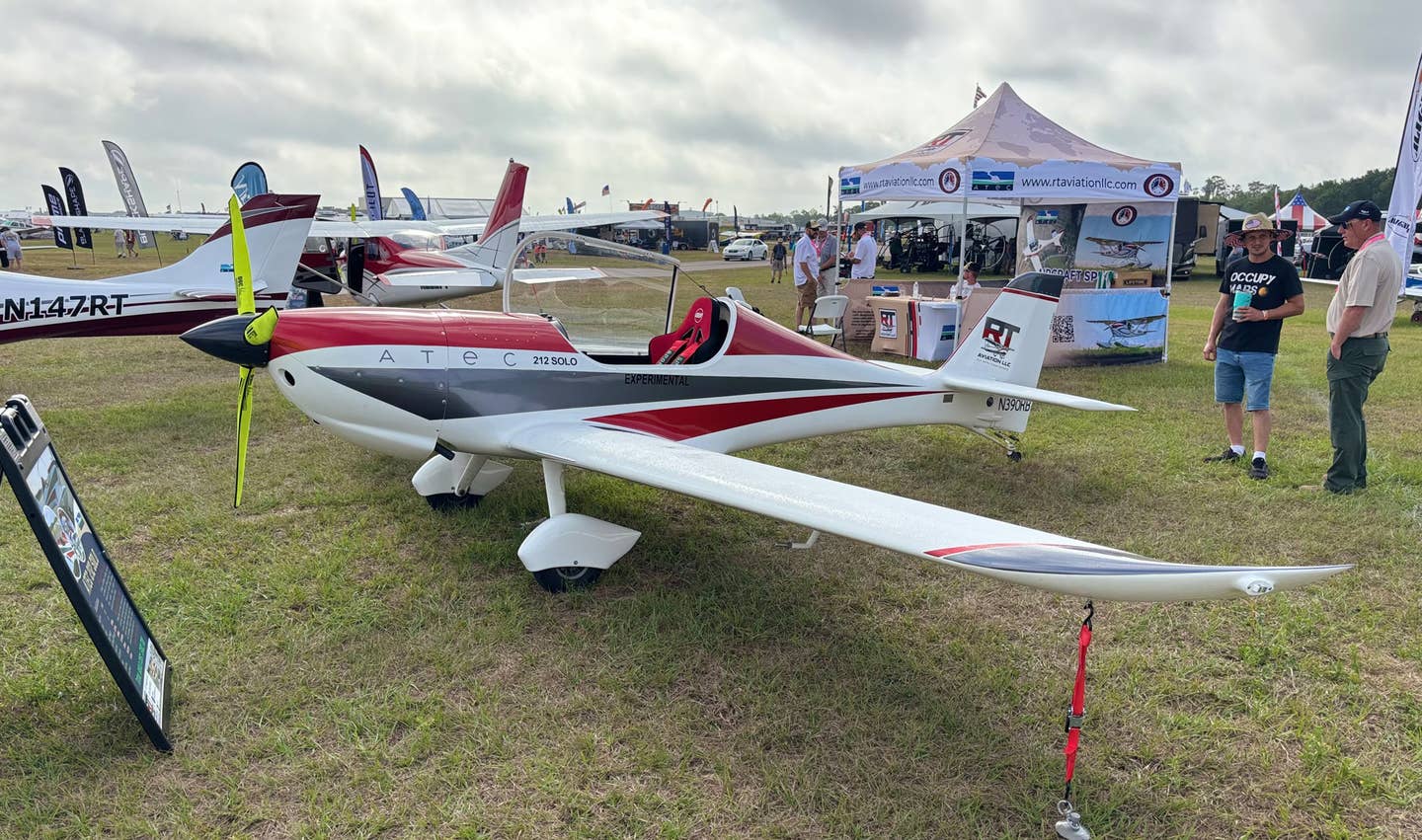NASA AD-1 Oblique Wing Research Aircraft
A scissor-wing aircraft was an early attempt to solve transonic flight issues. It was promising enough that NASA revisited the idea 30 years down the road.

The AD-1, a one-off NASA plane explored the promise of reconfigurable wings for supersonic aircraft. It wasn’t a complete failure, though none were produced. Photo courtesy of NASA
One of the biggest challenges that stymied researchers and aerodynamicists in the 1940s through the 1950s was the so-called "sound barrier:" Nearing the speed of sound, aircraft of that era encountered heavy stick forces and airflow separation from the wing, and pilots sometimes lost control, usually with fatal results. Toward the end of World War II, German researchers and engineers were very close to a solution to this problem with modestly swept-wing aircraft, but their designs never left the drawing board. After the war, the Allies recovered the science and furthered their own research into swept-wing aircraft to easily (and controllably) exceed Mach 1.
World War II German engineers also explored the flight characteristics of a movable single wing. One of their designs, the oblique-wing Messerschmitt P-1109, was first drafted in 1944. A high-mounted wing would swivel on its vertical axis, sweeping one wing forward and one wing back to enable the aircraft to achieve high-speed flight without changing the center of lift, and with less thrust. For takeoff and landing, the wing would be positioned to a symmetrical straight-wing configuration, thereby optimizing performance for those phases of flight over swept wing aircraft. The P-1109 was never built, and it isn't known if a wind-tunnel model of the aircraft was ever constructed or tested.
Interest in oblique-wing design returned in the 1970s, several years after a few variable swept-wing aircraft entered service. Most notably, the F-111, Mig-23 and Mirage aircraft were fast without losing desirable low-speed flying characteristics. However, high wing-hinge loads for these aircraft often resulted in maintenance issues. Looking for another way to get excellent high-speed performance with lower mechanical loads, NASA engineer Robert Thomas "R.T." Jones (who innovated the "American" delta and swept wing) revisited and advanced research into oblique wing design.
NASA Dryden Research Engineering Division, with the notable assistance of Burt Rutan, brought Jones' eventual design to fruition. The small proof-of-concept AD-1 was constructed of composite materials, powered by two French Microturbo TRS-18 engines (220 pounds of thrust apiece) and utilized a mechanical flight control system. Primary control of wing sweep consisted of an electric jackscrew mechanism with manual backup capability. The AD-1 weighed about 15,65 pounds, including fuel, pilot and test equipment. The aircraft stalled at about 60 knots and took off in 1,400 feet. It was noted during testing that at airspeeds below 100 knots, the control forces were comparable to a low-performance sailplane.
The AD-1 completed 79 test flights between 1979 and 1982. Its first test flight was purely by accident, with NASA test pilot Tom McMurtry unintentionally becoming airborne during a high-speed taxi test. The public was treated to the odd-looking aircraft at the Oshkosh Air Show in Wisconsin in August 1982, as the AD-1 wowed the crowd on eight different demonstration flights. Funding cuts to the program made these air show demos the last flights of the AD-1.
Ultimately, because of handling characteristics of the AD-1, the oblique wing concept never garnered commercial or military applications. However, fly-by-wire technology, which can negate some of these unwanted flight-handling problems, has renewed interest in oblique wing technology, mostly in the field of unmanned aerial systems.

Subscribe to Our Newsletter
Get the latest Plane & Pilot Magazine stories delivered directly to your inbox






